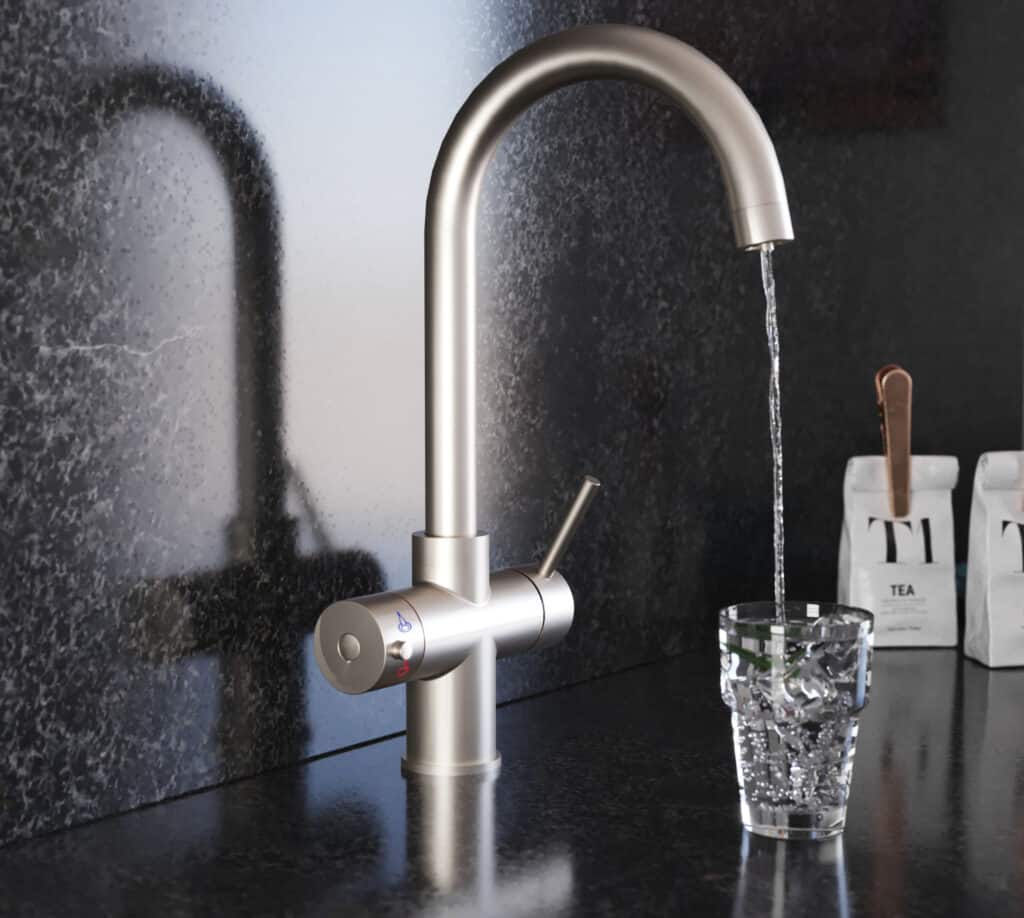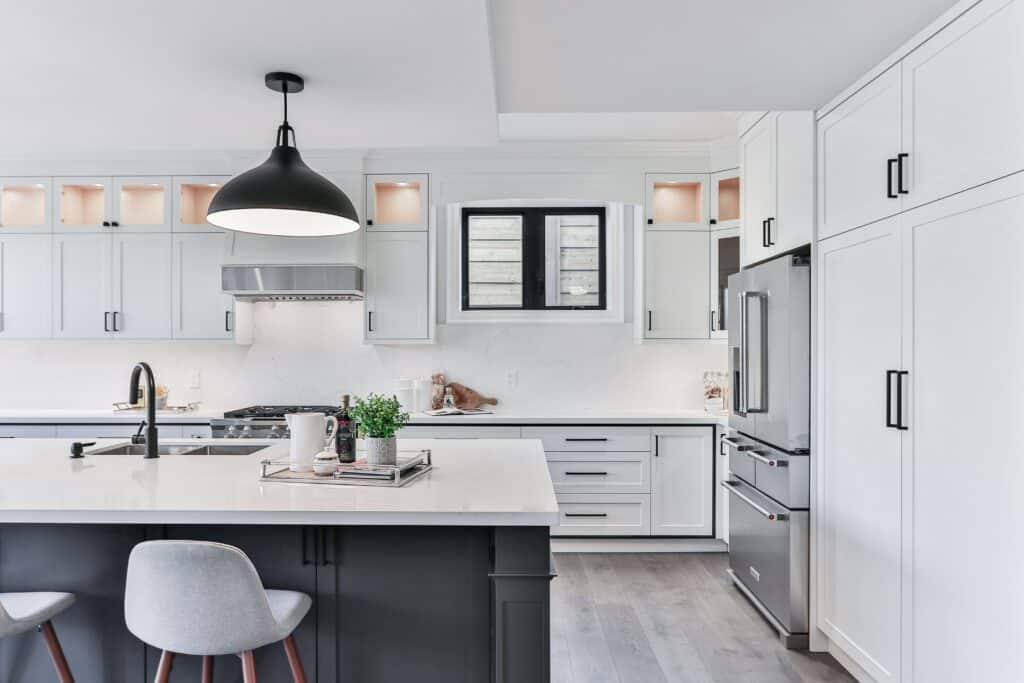How Long Does it Take to Fit a Kitchen?

If you're planning on remodelling your kitchen, one of the big questions you'll likely have is how long the project will take. In this blog post, we'll give you a rough estimate of how long it will take to fit a kitchen, based on the size and complexity of the job. Keep in mind that this is just a ballpark figure - every job is different, so your results may vary. Ready to get started? Let's go!
How Long Does it Take to Fit a Kitchen?
Estimating the duration of a kitchen remodel can be challenging due to various influencing factors. However, it's worth noting that the process generally takes between 1 to 4 months to complete. Let's delve deeper into the key considerations and their effects on the timeline.
Key Considerations:
-
Size and complexity of the project: The overall scope of your kitchen remodel will have a significant impact on the time it takes to complete. A small kitchen with minimal changes may take just a few weeks, while a large kitchen with extensive renovations could span several months.
-
Amount of prep work needed before construction: The amount of preparation required before construction begins is another crucial factor. This may include tasks like removing old cabinetry, disconnecting appliances, and addressing plumbing or electrical concerns. Depending on the extent of the prep work, this phase alone could add several weeks to the project timeline.
-
Special permits or requirements: Obtaining necessary permits and meeting local regulations can also affect the duration of a kitchen remodel. If your project requires specific permits or inspections, this may add extra time to the process, especially if there are delays in approval.
General Timeline:
- A kitchen remodel usually takes anywhere from 1 to 4 months to complete all stages. The actual duration depends on factors such as project size, prep work, and permit requirements.
- For a more accurate estimate, consult your contractor, who can assess your specific situation and provide a detailed timeline.
Which part of a kitchen remodel takes the longest?
Identifying the most time-consuming aspect of a kitchen remodel can be challenging, as various factors come into play. Some may argue that the construction process, including demolition and installing new plumbing and electrical systems, is the lengthiest part. Others might claim that planning and designing the new kitchen takes up more time.
Ultimately, the duration depends on several factors, such as:
- Size of the space
- Existing structural issues that need addressing
- Materials and finishes you plan to use
View this post on Instagram
Possible Aspects of a Remodel That May Take the Longest:
- Custom cabinetry: Designing, ordering, and installing custom cabinets can significantly extend the timeline of your kitchen remodel. Custom work often requires precise measurements and careful craftsmanship, which can take weeks or even months to complete.
- Structural changes: If your remodel involves moving walls, adding windows, or altering the layout, these structural changes can be time-consuming. This may involve obtaining permits, coordinating with various contractors, and ensuring the project adheres to local building codes.
- High-end finishes and materials: Sourcing and installing high-quality materials and finishes may also prolong your project. For instance, if you choose to incorporate natural stone countertops or imported tiles, the lead times for acquiring these products could add extra weeks to the timeline.
In conclusion, there's no quick or easy way to remodel a kitchen. Regardless of which part of the process takes the longest, it's crucial to approach any kitchen remodel with care and attention to detail for optimal results.
How long does planning a kitchen remodel take?
The time and effort required for planning a kitchen remodel depend on the project's scope. At the very least, you'll need to gather measurements, select materials, and establish a budget. Additionally, you might need to consult an architect or interior designer and acquire the necessary permits from local building authorities.
Based on the project's complexity, the initial planning phase can range from a few weeks to several months. However, it's essential to invest time in proper planning to ensure a smooth kitchen remodel that meets your expectations.
How to manage delays
Inevitably, when remodelling a kitchen, you'll face unexpected delays. These could range from unforeseen plumbing issues to missing parts from suppliers. Although these setbacks can be frustrating, it's crucial to remain calm and composed throughout the process.
To effectively manage delays during a kitchen remodel, implement the following strategies:
- Allow ample time for tasks: Allocate sufficient time for most tasks to account for any potential delays.
- Maintain clear communication: Stay in constant contact with your team and suppliers to address any issues promptly.
- Establish contingency plans: Prepare backup plans to tackle setbacks of any kind.
- Prioritise problem-solving: Focus on finding solutions rather than dwelling on potential problems. This approach helps keep your project on track.
- Practice patience and flexibility: Remaining patient and adaptable will enable you to successfully manage any delays that arise during your kitchen remodel.
By following these steps and maintaining a positive mindset, you can effectively navigate through challenges and ensure a smooth kitchen remodelling process.
How to avoid unexpected costs
To prevent unexpected expenses during a kitchen remodel, it's essential to plan and communicate effectively. Here are some key strategies to help you avoid unforeseen costs:
- Create a detailed plan and budget: Before starting your project, develop a comprehensive plan that includes all materials, labour, and professional assistance required. Review this plan with an experienced contractor or designer to ensure accuracy.
- Anticipate delays and complications: Estimate potential setbacks before they occur and prepare backup options, so you're ready to address any issues that may arise.
- Establish clear communication: Maintain open lines of communication with suppliers, contractors, and other professionals involved in the project. This ensures everyone is on the same page and helps prevent misunderstandings that could lead to additional costs.
- Monitor progress and expenses: Keep track of your project's progress and expenses regularly, comparing them to your initial budget. This allows you to identify potential cost overruns early and take corrective action.
- Include a contingency fund: Allocate a percentage of your budget (usually around 10-20%) for unforeseen expenses. This provides a financial cushion to cover unexpected costs without derailing your entire budget.
By following these tips, you can successfully navigate the challenges of a kitchen remodel and avoid unnecessary costs along the way.
Why Ordering Your Appliances First is Crucial
When undertaking a kitchen remodel, one essential step is to order your appliances first. This strategic move offers several benefits that contribute to a seamless and successful renovation.
- Influence on design: Appliances play a significant role in determining the overall design of your kitchen. By selecting them first, you can ensure that the rest of the design elements, such as cabinetry and countertops, complement your chosen appliances.
- Space planning: Knowing the dimensions of your appliances enables you to accurately plan the layout of your kitchen, avoiding potential issues with fitting or integration further down the line.
- Customisation and special requests: Ordering appliances early allows sufficient time for manufacturers to accommodate any customisations or specific features you desire, ensuring your kitchen meets your exact needs.
- Budget management: By purchasing appliances first, you have a clearer understanding of the remaining budget for other aspects of the remodel, helping you make informed decisions and avoid overspending.
- Lead times: Some appliances may have longer lead times, especially if they are custom-made or imported. Ordering them first ensures they arrive on time, preventing project delays.
In conclusion, prioritising appliance selection and ordering at the start of your kitchen remodel ensures a well-designed, functional, and personalised space that caters to your preferences and requirements.
FAQs
What is the most expensive part of a kitchen remodel?
It's challenging to pinpoint the most expensive part of a kitchen remodel, as it depends on the specific design and materials chosen. Various factors, such as size, layout, appliances, and flooring type, can influence costs. However, some elements typically come at a higher price:
- Cabinets: Custom cabinetry, especially those made from high-quality materials, can significantly increase the overall cost of your remodel.
- Countertops: Opting for luxury finishes like marble or quartz countertops can be one of the more costly elements of your project.
- Appliances: High-end appliances, such as professional-grade ovens and fridges, can contribute to a sizeable portion of the budget. If you have your heart set on a particular appliance, such as a beautiful black tap, it's worth factoring this into your initial budget sheet.
- Flooring: Choosing premium flooring materials, like hardwood or natural stone, may result in a higher expense.
Ultimately, without knowing your project's specifics, it's difficult to determine which element will be the most expensive. However, every choice made during a kitchen remodel will impact both its cost and aesthetic appeal. Carefully considering all options, whether luxurious upgrades or budget-friendly alternatives, helps ensure the best possible outcome for your kitchen redesign.
What should I do first if I’m renovating my kitchen?
Embarking on a kitchen renovation involves many decisions, from selecting materials and fixtures to balancing design and functionality. However, the initial step should always be creating a detailed plan. Here's how to get started:
Develop a clear blueprint: Before making any changes, outline your vision for the kitchen, ensuring that every aspect works together seamlessly.
Establish a budget: Determine the funds you're willing to allocate to the project and prioritize expenses accordingly.
Consider functionality: Think about how you use your kitchen daily and incorporate features that enhance efficiency and usability.
Seek professional advice: Consult with an interior designer or architect for guidance on optimizing layout and design choices.
Research materials and appliances: Explore various options and choose those that suit your needs, preferences, and budget.
Plan for contingencies: Set aside extra time and funds for unexpected issues that may arise during the renovation process.
By prioritising planning, you'll effectively manage budgeting and scheduling concerns, paving the way for a smoother kitchen renovation. Whether you're undertaking major updates or minor adjustments, a well-structured plan is key to a successful transformation.
Conclusion
Kitchens are typically the most expensive room in a home to renovate, and they can also be one of the most time-consuming rooms to remodel. Depending on your specific needs and the scope of your renovation project, it may take anywhere from four weeks to several months to fully renovate your kitchen. Keep in mind that this is a general estimate, and your project may vary.
Our boiling water taps are incredibly easy to install and maintain and even easier to love. Learn more about boiling water taps in our buyer's guide. Alternatively, find out more about kitchen remodels in our No-Nonsense Guide to Incredible Kitchen Renovations.

